
For most people, modern living requires spending most of the day in interior spaces - in fact, according to a report by the Environmental Protection Agency, the average person spends around 90% of their life indoors. As a result, this implies missing out on health benefits associated with sunlight exposure, such as vitamin D absorption, regulation of circadian rhythms, higher energy levels and even improved mood. Thus, one option is to increase the amount of time we spend outdoors. But because most daily functions are carried out inside buildings, it is crucial to incorporate and prioritize natural lighting in interiors.
Of course, too much direct sunlight penetration can also cause damaging effects – like visual discomfort and undesirable heat gains –, which is why it is essential to properly control its entry. To do so, some conventional solutions include installing shading devices or adding window treatments such as films or heat reflective glazing. However, there are many other creative strategies to efficiently control natural light and, at the same time, enhance the architecture of modern spaces, adding a strong aesthetic and emotional value.

With this in mind, below we present some beautiful ways to use natural light as a strong design statement while maintaining comfort and functionality. From a focal dramatic effect, to unique patterns or a subtle glow, we explore this through a round-up of inspiring examples where light is the protagonist.
Dramatic focal points
Of the many ways to manage natural light as a design element, skylights instantly draw users’ attention. Inspired by famous openings such as the one in The Pantheon, these hold a strong symbolic meaning and are very useful in large spaces that cannot be adequately lit by windows, creating a dramatic focal point effect or a pleasant filtered light. However, before adding a skylight, there are some key points to have in mind.

Among them, it is important to consider the size of the room and its purpose; for example, spaces for everyday activities such as reading or eating benefit from extra direct daylight, but more intimate spaces like bedrooms may not require focalized light (they could, nonetheless, include smaller skylights that admit diffused light). Another crucial factor is orientation: while a west facing skylight will get strong afternoon sun, an east facing one will receive more light in the morning. Similarly, facing the north will provide constant light throughout the day, whereas facing the south will result in weaker and cooler daylight penetration.
After the optimal placement is determined, there are many creative possibilities to explore. Usually in the form of circles, squares, or more organic shapes, skylights certainly become a striking design statement in any room, adding to the overall aesthetic while framing light entry and sky views. However, these must include hermetic sealing and use glass with adequate thermal performance in order to avoid overheating, prevent water infiltration, and ensure efficiency.


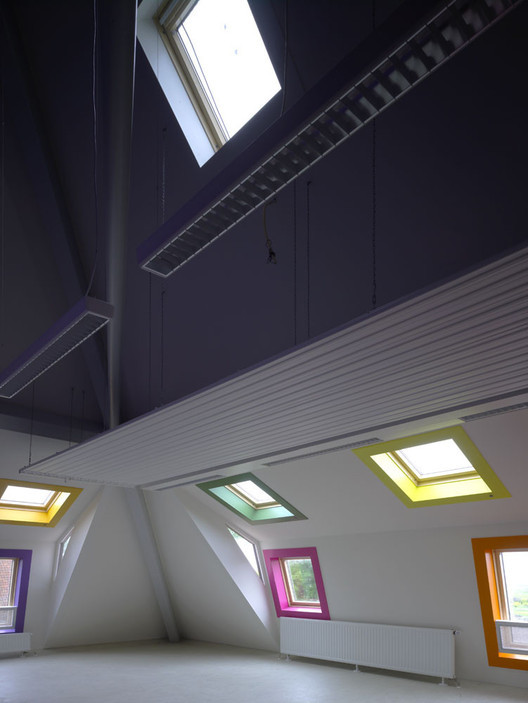
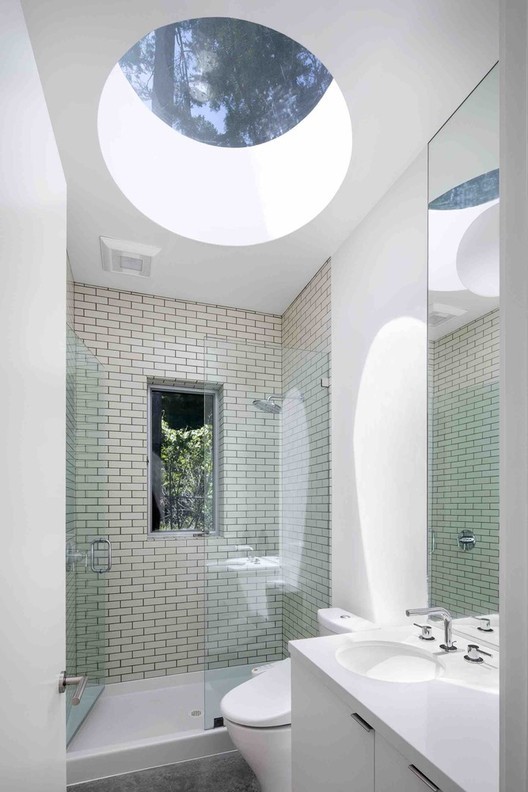
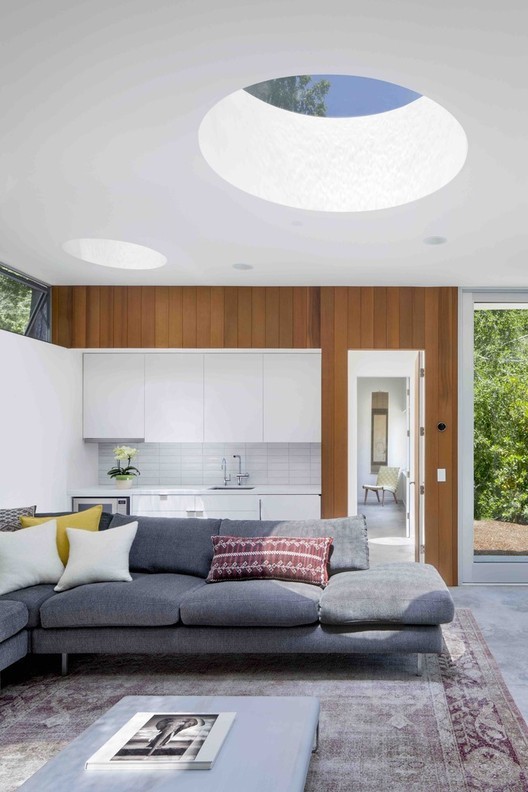
Defined shapes and patterns
Whether it be through perforated walls, lattices, or various openings in ceilings, intricate and repetitive light entrances are effective in filtering sunlight, providing thermal comfort and offering natural ventilation. But to achieve the right balance between functionality, comfort, and aesthetics, it is crucial to first consider certain factors.

Just like with skylights, determining the optimal orientation for the desired effect is key, as it can determine the movement and intensity of the light and shadows. Also, the addition of a filtering surface (like a glass panel) should be evaluated according to the use and type of room. For example, whereas hallways or collective spaces can function with openings that directly connect to the outside, most private environments usually require glass placed between the openings and the interior for thermal, privacy and security reasons.
Once these conditions are defined, there are endless creative options when it comes to technique and materials: from wood panels intricately perforated with CNC laser technology, to exposed beams that provide a rhythmic linear sequence of light and shadow patterns. Regardless of the technique, these repetitive openings control abundant daylight while projecting distinctive, strongly defined shapes – hence acting as effect lighting, since only the light and shadows themselves are highlighted, creating a kind of theatrical impact. Therefore, these make a statement by adding unique dimension, decoration, and movement to surfaces that would otherwise be plain, granting natural light its own aesthetic value as a powerful design element.




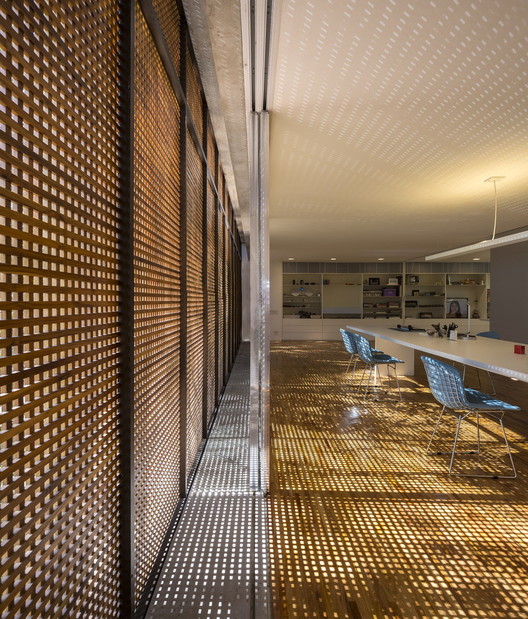
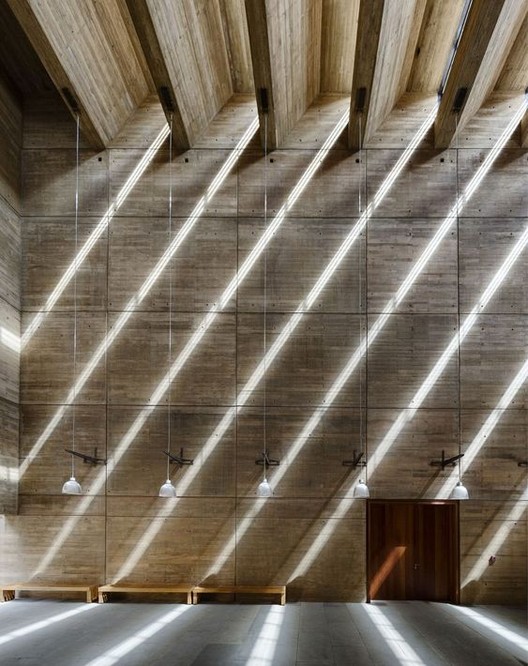

Warm diffused effect
When looking to reduce the intensity of daylight and create a comfortable, warm ambiance, filtering light evenly throughout a surface is the ideal solution – especially in buildings where visual transparency is not an essential requirement. From milky glass panels to a wide range of fabrics, this look can be achieved through various materials. But before making the selection, it is necessary to study in detail the orientation and use of the building, the configuration of interior spaces, and the desired style.

For instance, mixing textured glass channels with more transparent ones in the same frame is ideal for seamlessly delimiting spaces with varying levels of privacy. On the other hand, fabric partitions work well in regulating light while maintaining a shared environment in a collaborative workspace. Sometimes complemented with artificial light, both materials are able to achieve a subtly hazy glow effect across entire walls or skylights.
Therefore, using these filtering surfaces as facade cladding can be a unique and elegant way to transform abundant direct sunlight into a visually appealing diffused glimmer. In contrast to focalized light, this creates serene and calming environments, being ideal for contemplative environments or exhibition spaces. But depending on the level of translucency, the effect can also be quite dynamic, reducing people and objects into moving abstract silhouettes with varying intensities. In this way, natural light is efficiently and creatively managed by adding layers of subtle brightness, movement, and ambiguity.
















